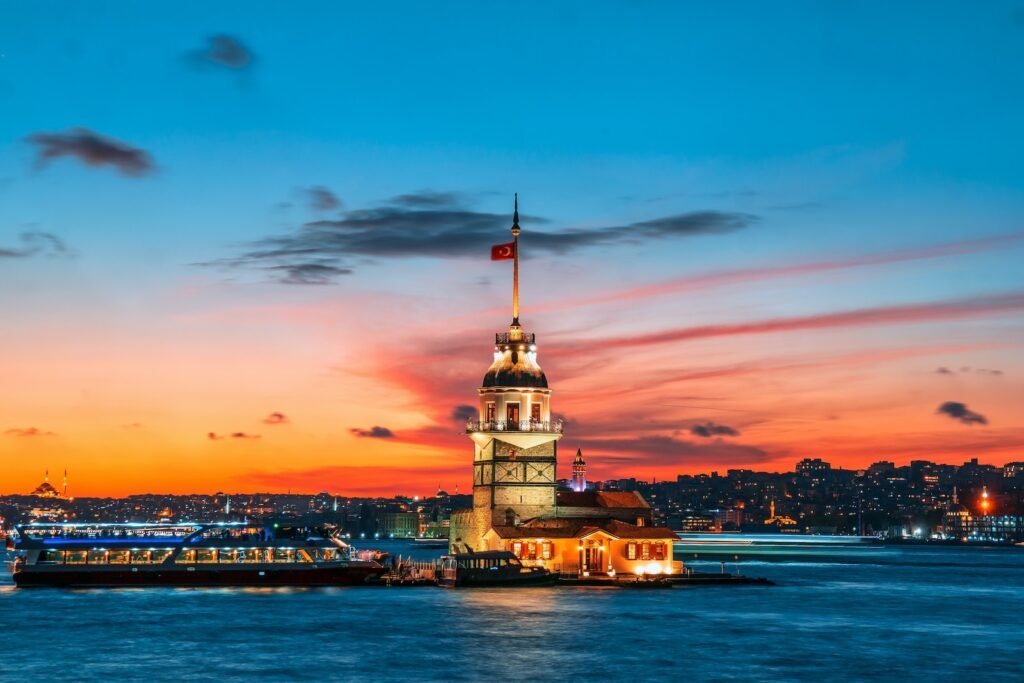Istanbul, the vibrant metropolis of Turkey, is a city that seamlessly blends its rich history with its modern aspirations. Over the centuries, Istanbul has evolved and transformed, leaving behind a fascinating journey through time. From its early days as Byzantium to its transformation into Constantinople and then Istanbul, the city has been witness to numerous civilizations and empires. Its strategic location, architectural marvels, and diverse heritage make Istanbul a treasure trove for history enthusiasts. In this article, we will take you on a captivating journey through Istanbul’s past, exploring its evolution and the significant events and figures that shaped its history.

Istanbul: A City Steeped in History
As one of the oldest continuously inhabited cities in the world, Istanbul boasts a remarkable history that spans over 2,500 years. Its strategic position along the Bosphorus Strait, connecting Europe and Asia, has made it a coveted city throughout history. This unique location has attracted various civilizations, leaving behind a rich tapestry of cultural influences.
From Byzantium to Constantinople: The Early Years
Istanbul’s history can be traced back to its founding as Byzantium in 657 BCE by Greek colonists. The city thrived as a Greek colony, but its true transformation came in 330 CE when Emperor Constantine the Great made it the capital of the Roman Empire. Renamed Constantinople, the city became a thriving center of trade, culture, and power in the Eastern Roman Empire.

The Roman Influence on Istanbul’s Architecture
During the Roman era, Istanbul witnessed the construction of magnificent architectural wonders. The most notable of these is the Hagia Sophia, a masterpiece of Byzantine architecture that later became a mosque and is now a museum. Its grand dome and intricate mosaics stand as a testament to the Roman influence on Istanbul’s architectural heritage.
The Golden Age of the Byzantine Empire
Istanbul reached its peak during the Byzantine Empire, which emerged as the successor to the Roman Empire. Under the reign of Emperor Justinian, the city experienced a golden age, marked by grand construction projects, such as the Basilica Cistern and the Theodosian Walls. This era saw the city become a center of art, science, and scholarship.
The Ottoman Empire: Istanbul Becomes the Capital
In 1453, Istanbul fell to the Ottoman Turks, marking the beginning of a new era for the city. Renamed Istanbul, it became the capital of the vast Ottoman Empire. The Ottomans left an indelible mark on the city, with the construction of iconic buildings like the Topkapi Palace and the Blue Mosque. Istanbul became a melting pot of cultures, religions, and traditions under Ottoman rule.
Architectural Gems from the Ottoman Era
The Ottoman Empire brought forth an architectural renaissance in Istanbul. The grandeur of Istanbul during this period can be witnessed in the opulent palaces, exquisite mosques, and bustling bazaars that still stand today. The majestic Suleymaniye Mosque, the ornate Dolmabahce Palace, and the vibrant Grand Bazaar are just a few examples of the architectural gems from the Ottoman era.
Istanbul’s Strategic Position as a Trade Hub
Throughout its history, Istanbul’s strategic location has made it a crucial trade hub. Situated at the crossroads of Europe and Asia, the city became a vital center for the exchange of goods, ideas, and cultures. The Silk Road passed through Istanbul, bringing together merchants from different corners of the world, further enriching the city’s diverse heritage.
A Melting Pot of Cultures: Istanbul’s Diverse Heritage
Istanbul’s history as a melting pot of cultures is evident in its diverse heritage. Over the centuries, the city has been home to Greeks, Romans, Byzantines, Ottomans, and many other civilizations. The blending of different cultures is reflected in Istanbul’s architecture, cuisine, and traditions. The city’s unique character is a result of the harmonious coexistence of these diverse influences.
Istanbul’s Role in World History: Key Events and Figures
Istanbul has played a significant role in shaping world history. It was the center of the Eastern Roman Empire, a key player in the Crusades, and witnessed the rise and fall of the Ottoman Empire. Prominent historical figures such as Emperor Constantine the Great, Emperor Justinian, and Sultan Mehmed the Conqueror left their mark on Istanbul, making it a city deeply intertwined with the pages of history.
Modernization and Transformation: Istanbul in the 20th Century
In the 20th century, Istanbul underwent a period of modernization and transformation. The city experienced rapid urbanization, with the construction of modern infrastructure and the expansion of its boundaries. Istanbul became a thriving metropolis and a cultural hub, attracting people from all over the world.
Preserving Istanbul’s Historic Character: Challenges and Successes
Preserving Istanbul’s historic character has been a challenging endeavor in the face of rapid urban development. However, there have been significant efforts to protect and restore the city’s architectural treasures. The inclusion of Istanbul’s historic areas in UNESCO’s World Heritage List and the establishment of conservation projects demonstrate the city’s commitment to preserving its rich history.
A Journey Through Time: Exploring Istanbul’s Historic Sites
Embarking on a journey through Istanbul’s historic sites is like stepping into a time machine. From the awe-inspiring Hagia Sophia to the majestic Topkapi Palace, each site tells a unique story of Istanbul’s past. Exploring the ancient walls, wandering through the Grand Bazaar, and cruising along the Bosphorus are experiences that allow visitors to immerse themselves in Istanbul’s captivating history.
Istanbul’s evolution through centuries is a testament to its resilience and cultural richness. Its transformation from Byzantium to Constantinople and then Istanbul has shaped the city into what it is today – a vibrant metropolis that seamlessly blends the old with the new. From its architectural wonders to its diverse heritage, Istanbul offers a fascinating journey through time. As the city continues to evolve, it remains a living testament to its remarkable history, captivating visitors from around the world.

